This post is specifically for comic book artists. I’ve seen many guides on how to get started at doing artist alley in general, but very few covered selling comics at cons, specifically.
Looking back on one year since I’ve first started selling my comic book, I feel like I’ve learned so much! During this time, I’ve been manning a table at a dozen small and big conventions/markets in German speaking countries.
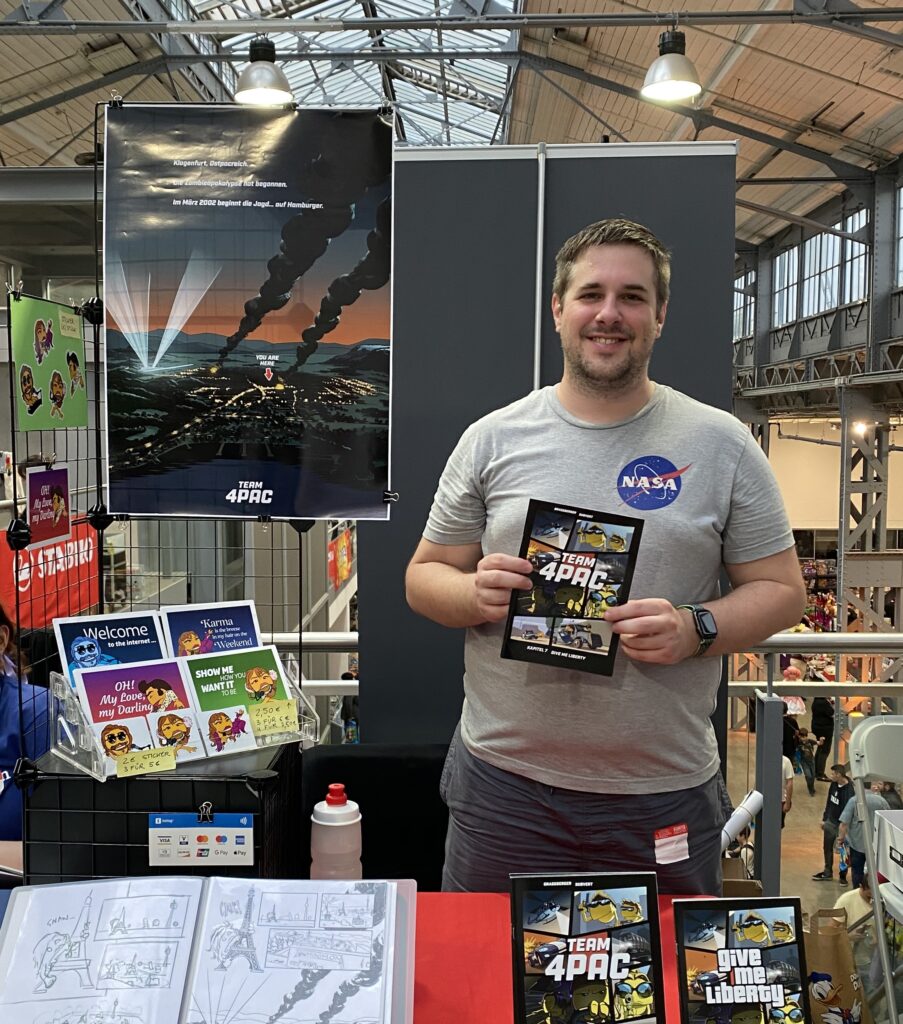
Marketing and branding don’t come naturally to me, so I’ve been learning by trial and error. I just jumped into the world of comic cons and hoped for the best. As my setup improved, I could see what changes actually contributed to my success.
It took one year for me to finally sell all of my first edition. It was just a small run, consisting of 50 copies, but it was a lot more effort than simply printing them and stacking them on a table!
So here are some tips to help you out:
1. Start with the first issue
This might be obvious, but I had to learn this the hard way 😅
If you’re working on a series, print issue #1 first. In the age of streaming, most people don’t want to jump into a series mid-way. So as an artist, why wouldn’t you start at the beginning?
Well, If you’ve been working on a series for several years, like me, you’d likely want to show off your latest and greatest artwork first. This was the reason why I decided to print issue #7.
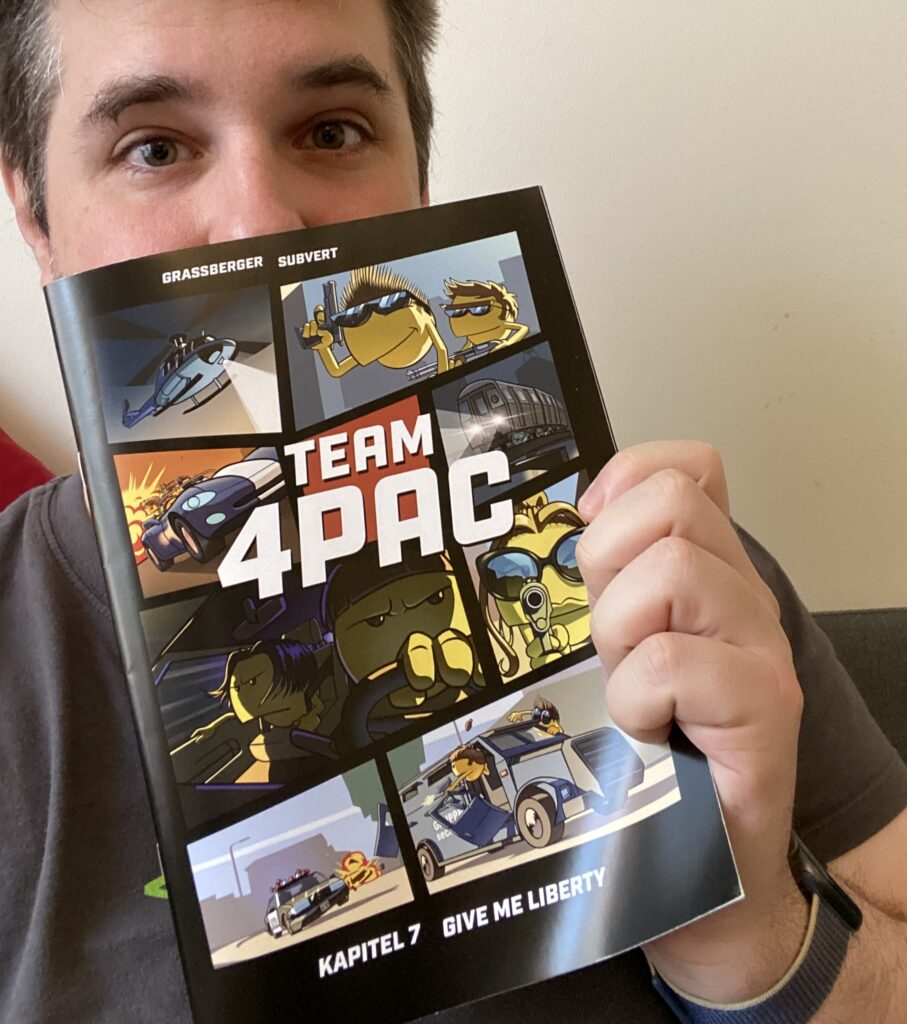
Considering my limited resources, I directed all of my energy into it. Naturally, and to be fully transparent, I printed the number “7” on the cover. This left many people puzzled: “Where is number 1? Where is the rest?”
So what can you do, instead? Offer a better entry point:
- Alongside, say, issue #5, make sure to print issue #1 as well. It’s good to provide choices.
- Making a self-contained one-shot is a good option. Additional benefit: It won’t seem like that big of a commitment to the reader.
- Do it Lukas-style and: Write a prequel! (can also be combined with 1.)
- You could re-draw your first issue, but …
It’s normal to see a progression as you grow as an artist. I’d suggest you only do this if there is a huge, huge difference in quality compared to your current work. Ask your peers for feedback: Would they buy your old artwork? Making comics is already a lot of work, so unless you have to, try not to increase your workload even more!
2. Offer something worth buying
Back in May, I considered printing 100 copies of a black-and-white preview: Half of the pages would’ve consisted of inked artwork and the other half would just be sketches.
I was eager to sell something brand new and get the most of my expensive trip to Comic-Salon Erlangen. Ultimately, I decided against sending the order to the printer.
Why was that? Well, you should ask yourself: Would you yourself buy something that clearly looks unfinished? Wouldn’t you rather wait for it to be, you know, done, before spending your money?
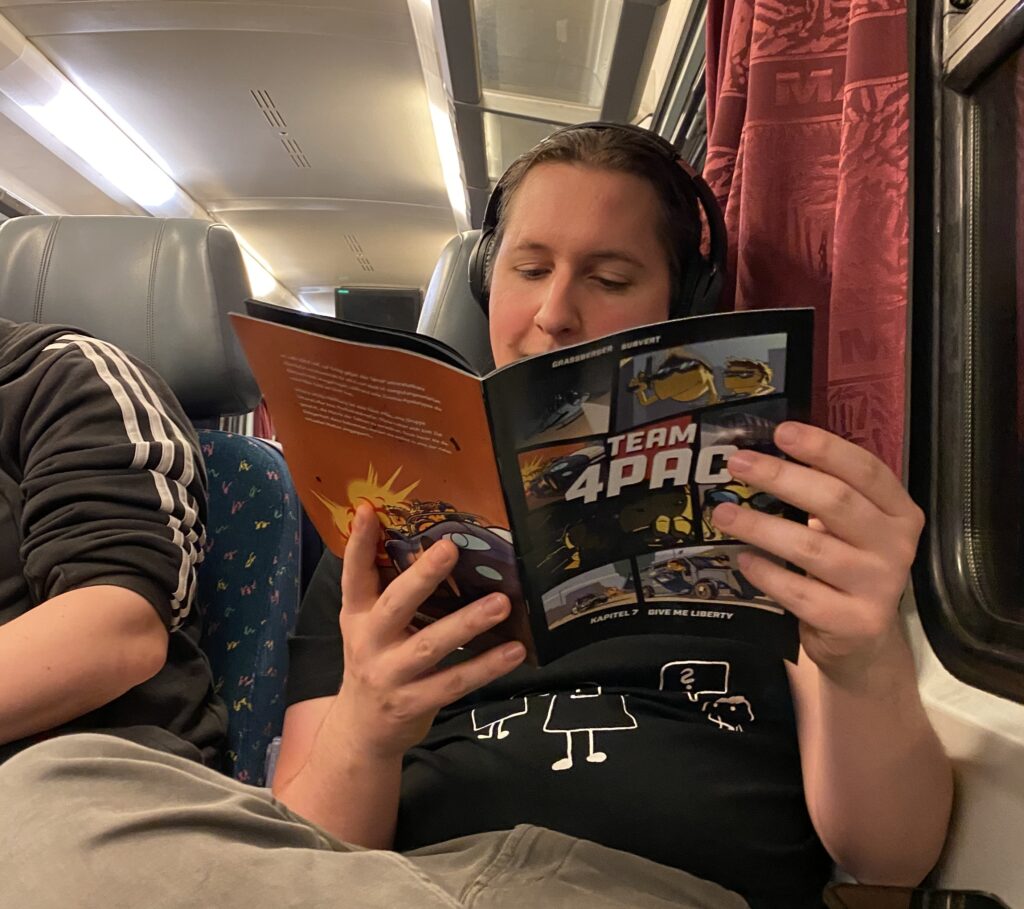
For comics, the definition of “finished” can actually vary from person to person. Some people want to buy every issue as it comes out. Some will want to wait for a volume collecting the issues, perhaps even for a hard cover.
But usually (unless you are from Japan and are creating an authentic manga) that means your comic is expected to be in color. Do your research and pick an established format: American-style comic books usually contain about 24 pages, European albums are about 48 pages.
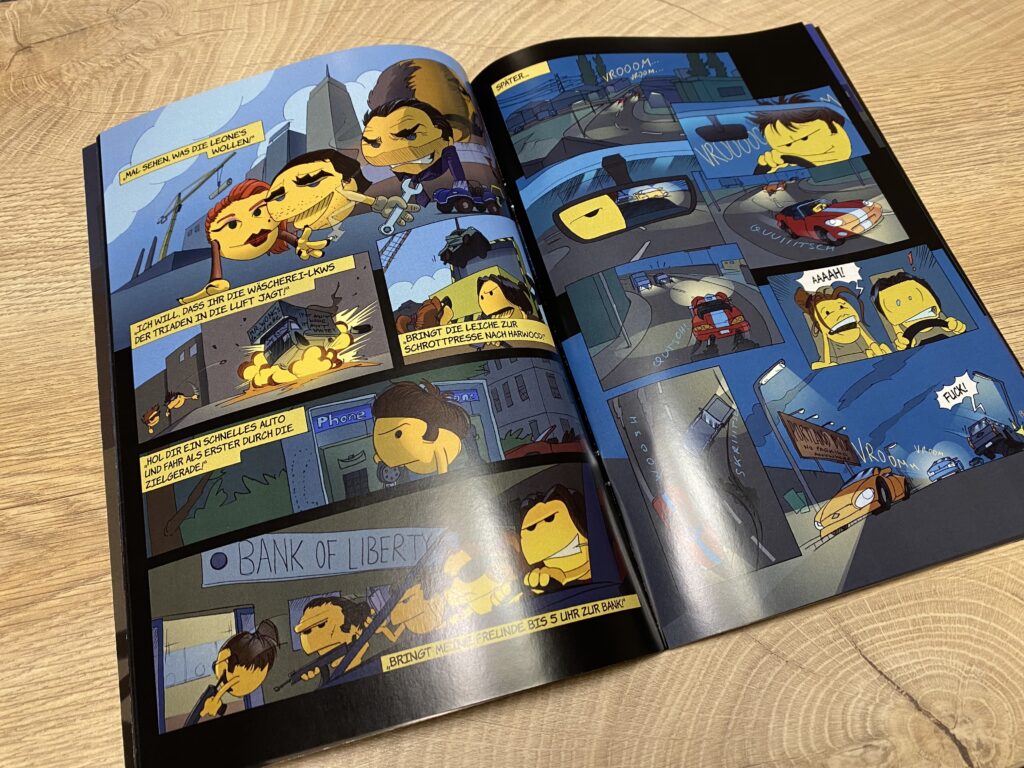
You can sweeten the deal with bonus material: Self-published booklets usually contain a personal touch, like a note from the author about its creation.
Maybe you’d like to include concept sketches or a work in progress snapshot of a page. Make sure to include a (mostly) blank page at the beginning, so you can sign it and have room for spontaneous drawings to please your buyers.
So create something you would want to buy yourself.
3. Print reading samples
Some people don’t want to commit to spending 12€ on a book they have never heard of before. So it’s a good idea to offer a low-priced option, at 5€ for example. Doing this can even help to sell your full issue more!
A sample of your work could be a 12-page booklet containing the beginning of the story, ideally leaving the reader on a cliffhanger.
In my experience, it sells best alongside your full issue, at about half the price. I printed mine in a more compact form factor (A5) as well, to have the full book (17x24cm) stand more apart.
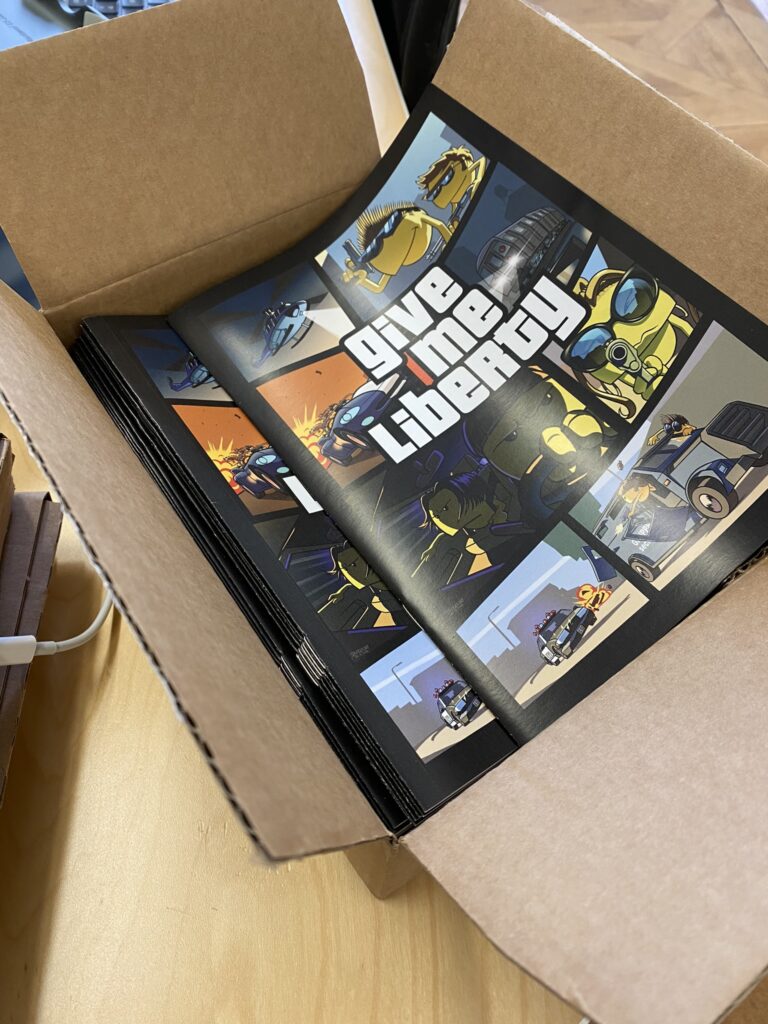
An interesting experiment was offering the sample at a pay-what-you-want model. If you want to get as many of them out there as possible, this could be the way to go.
Doing this, I was able to sell 27 pieces in one weekend. Don’t expect to make a profit this way, though: On average, people gave me 1.80€, barely covering printing costs, so keep that in mind.
4. Start small
This might be one of the most important take-aways: Start small!
It may be tempting to spend hundreds of euros/dollars to stock up on large prints and all kinds of merch for your first visit to a large con. After all, this could be your big break! Nothing ventured, nothing gained, right?

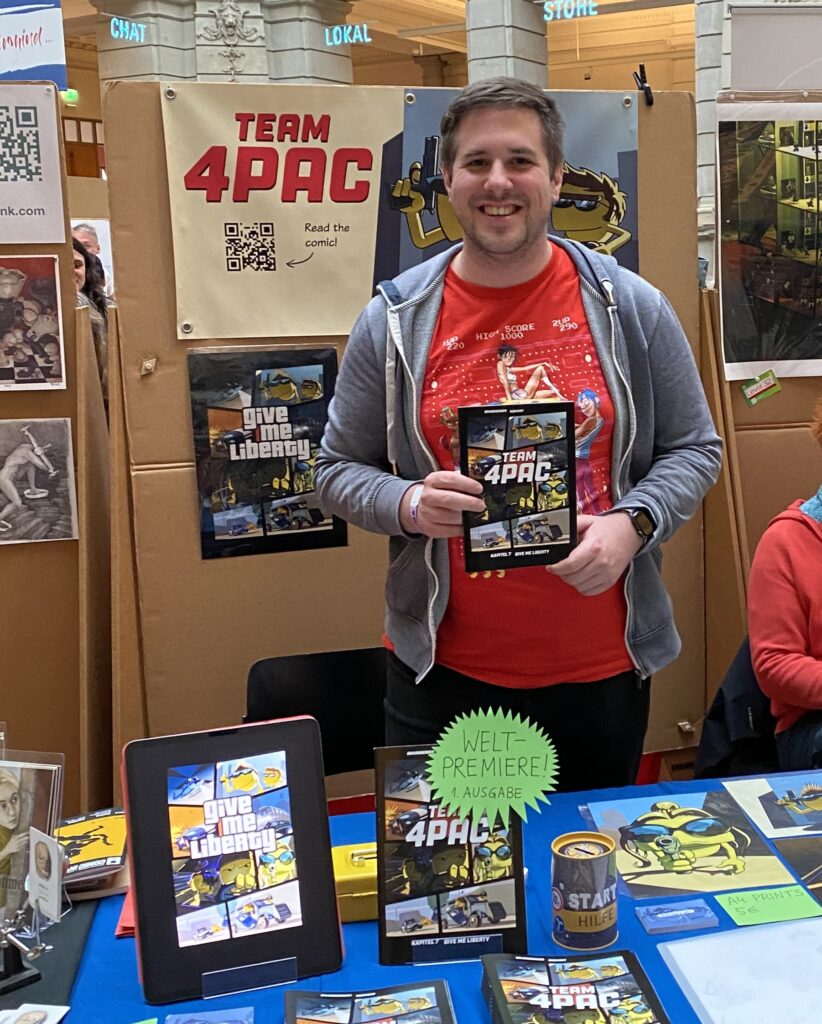
Well, without any experience, you might make some miscalculations about the demand you’ll be facing. If nobody knows your original characters, would they buy a poster to hang on their wall?
Worst case: You won’t make your money back and your expensive prints will stay in a dusty cardboard box for the rest of their existence. That would just be a shame, wouldn’t it?
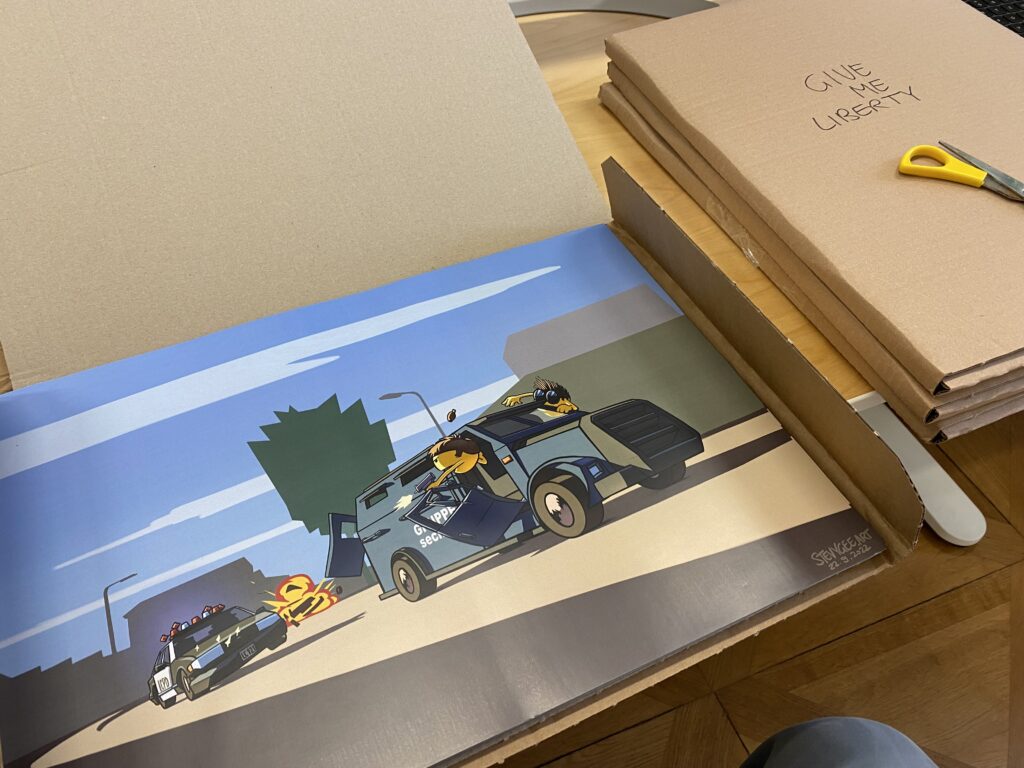
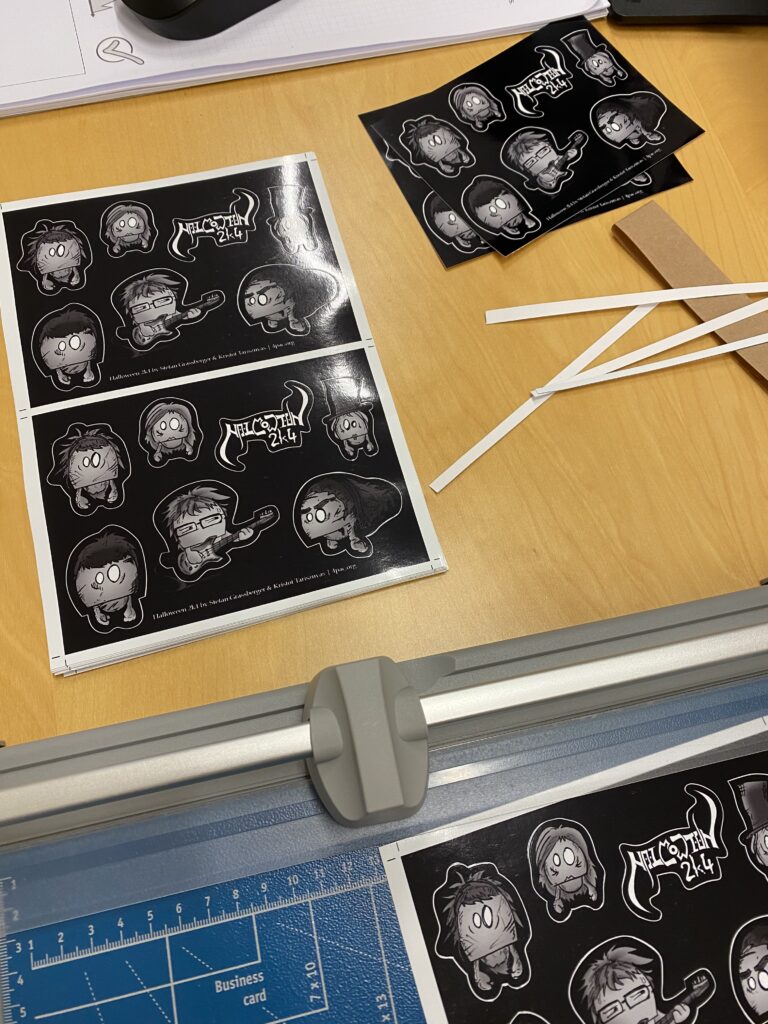
It’s smarter to have your artwork prove itself first. Try printing smaller items with multiple designs, like postcards or stickers. Keep track of how each of them sell. After your first event, you can still decide to print the winners as large prints!
Now that you know what people like, you can make an informed decision!
In part 2, I’ll cover what events to look for and what to plan for your presentation leading up to your first event!
If you don’t want to miss it, make sure to subscribe!
Leave a Reply